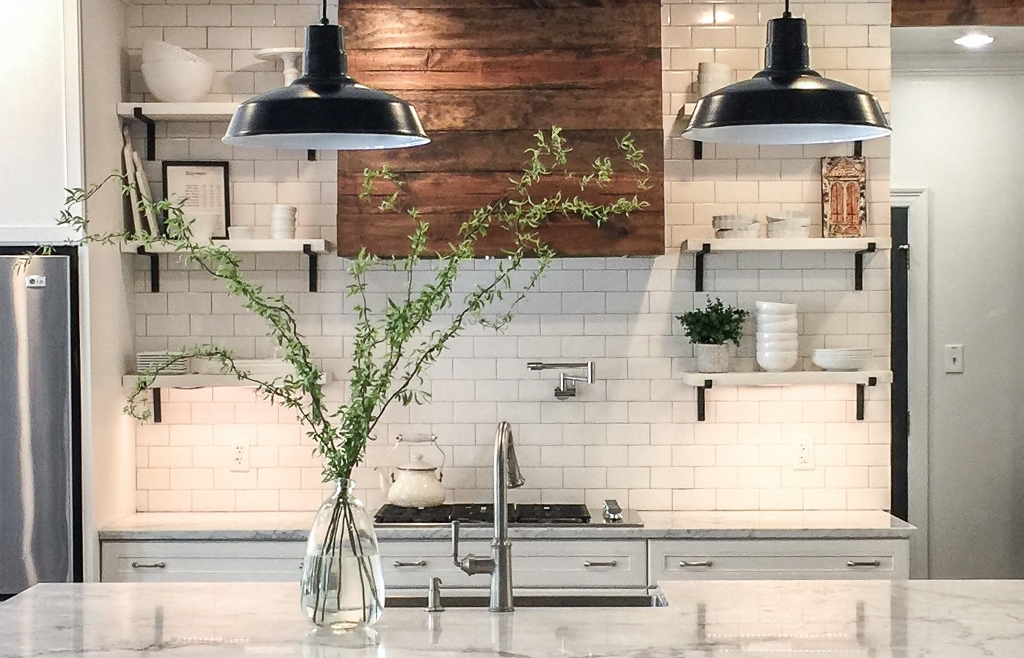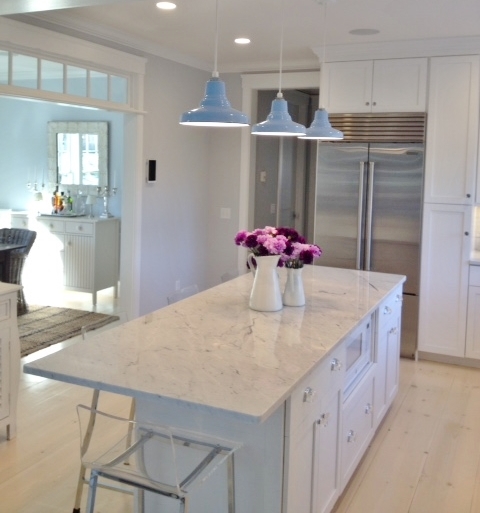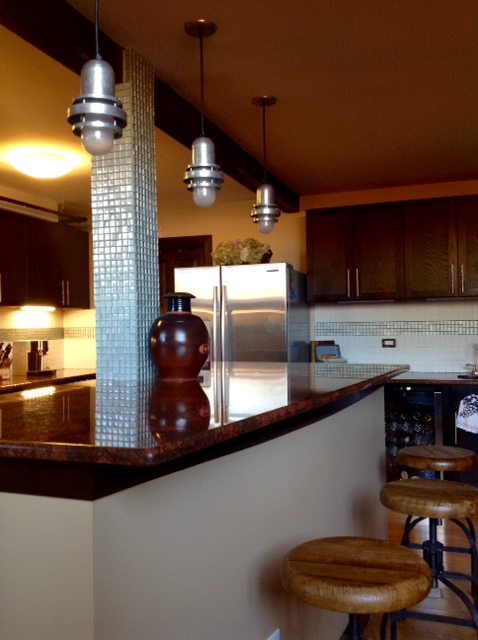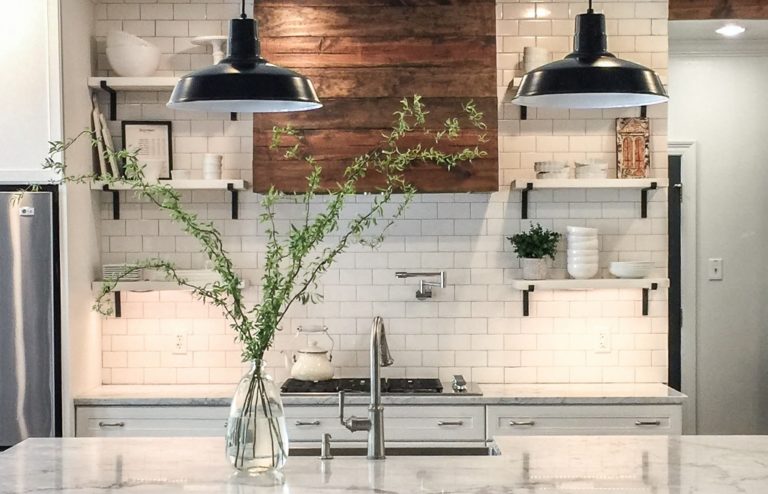
How To | Kitchen Lighting Tips
We often say that the kitchen is the heart of the home. With a wide range of activities taking place from weekend breakfast spreads and after-school homework to entertaining friends and late-night cups of tea, the kitchen is one space where lighting is a critical component to functionality and style.
Today, we’ve gathered some of our best kitchen lighting tips from both customers and our guest bloggers. And, as always, our sales team is a great resource when you have questions about kitchen lighting!
Guest blogger Melissa Andersen advises that kitchen pendant lights, like these Union Pendant Lights above, should be at least 30-34” above the counter to allow for plenty of headroom (approximately 72” from the floor). The same rule of thumb applies for positioning pendants above a dining table.
Melissa also notes that when lining pendants across a counter or island, choose a style that is at least 10” smaller in diameter than the width of the surface. Measure approximately 12-15” in from either end of the surface, and then evenly space the lights within that span. The cylindrical profile of the Brewster Pendant Lights, above, works well with this narrow island.
Our good friends Anthony Carrino and John Colaneri of HGTV’s Kitchen Cousins love to add color to kitchens. An easy way to do this is by customizing the cord. For a pop of personality that doesn’t overwhelm, choose a cord in a fun color or pattern that matches or contrasts with the scheme and style of the kitchen.
Cheryl Sottile, owner of H.I.P. Design in Indialantic, Florida always considers what other design elements are in close proximity to the kitchen. In the space above, the customer chose the unique Pollock #8 Pendants to serve as a focal point. The neutral gray cabinets and back splash support these colorful porcelain pendants but don’t upstage them or change the feel of the space.
Finally, Melissa, our guest blogger, also tackled a number of design questions in this post including how to layer light in a kitchen with high ceilings. To make sure the whole space is illuminated without creating a jumble of wires in the ceiling, visually divide the space into thirds. The top third is where you can hang large, multi-light fixtures, such as a cluster of pendants or a chandelier. These fixtures provide light but also draw the eye up to the ceiling. LED lighting is especially helpful in high ceiling applications — longer-lasting bulbs means breaking out the ladder less frequently!
The middle third of the space is for accent lighting, such as sconces and wall lanterns, which provide gentle, general illumination or can focus attention on a special architectural feature or art. Notice above a multi-light barn pendant over the counter, the matching flush mount pendant over the table, and complementary barn sconces on the wall.
Lastly, the bottom third of your space is perfect for under-cabinet lights. Not only do under-cabinet lights provide the perfect mood lighting, but they also act as much-needed task lighting for all the (knife-wielding) jobs you do on your kitchen counters. Put these on dimmers for even more flexibility!







